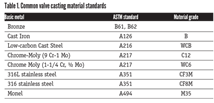2013 Fertilizer Explosion in West, TX Still Serves as a Reminder for Safety Concerns
Many of the points included in a 2016 report illuminate issues that still afflict chemical plants today.
Edited by Margo Ellis
On April 17, 2013, the West Fertilizer Co. blending and distribution facility in West, TX exploded, killing 12 emergency responders and three other people living close to the site, and causing more than 260 injuries. The U.S. Chemical Safety and Hazard Investigation Board in Washington, D.C. issued its Final Investigation Report in January 2016. That 264-page report, downloadable here, remains relevant today. Indeed, the issues identified and the lessons learned from that disaster certainly deserve review at many other plants and should be shared with those who have entered our industry since then.
The site had a stockpile of between 40 and 60 tons of fertilizer-grade ammonium nitrate (FGAN) as well as an additional volume not yet unloaded from a railcar. Around 7:30 that night, the first signs of a fire were reported to local responders. An explosion occurred only about 20 minutes later. The blast completely destroyed the facility and damaged more than 150 buildings off-site, with about half of them needing complete demolition before reconstruction.
The full article from Chemical Processing, including important conclusions cited by the editor, is here.
RELATED CONTENT
-
The Diverse Role Valves Play in the Chemical Industry
The chemical industry is extremely diverse with more than 60,000 known products. Like all process industries, the chemical industry needs valves designed for safe, efficient and reliable process operation.
-
Paint & Coatings
A walk through a typical valve distributor’s warehouse will yield a contrasting view of either silver or black products.
-
The Limits of Standard Manual Globe Valves for Throttling
A common practice in process services is to use manual globe valves with hand wheels for regulating flow.








 Unloading large gate valve.jpg;maxWidth=214)


